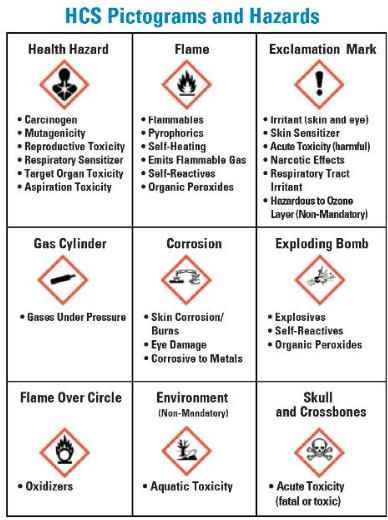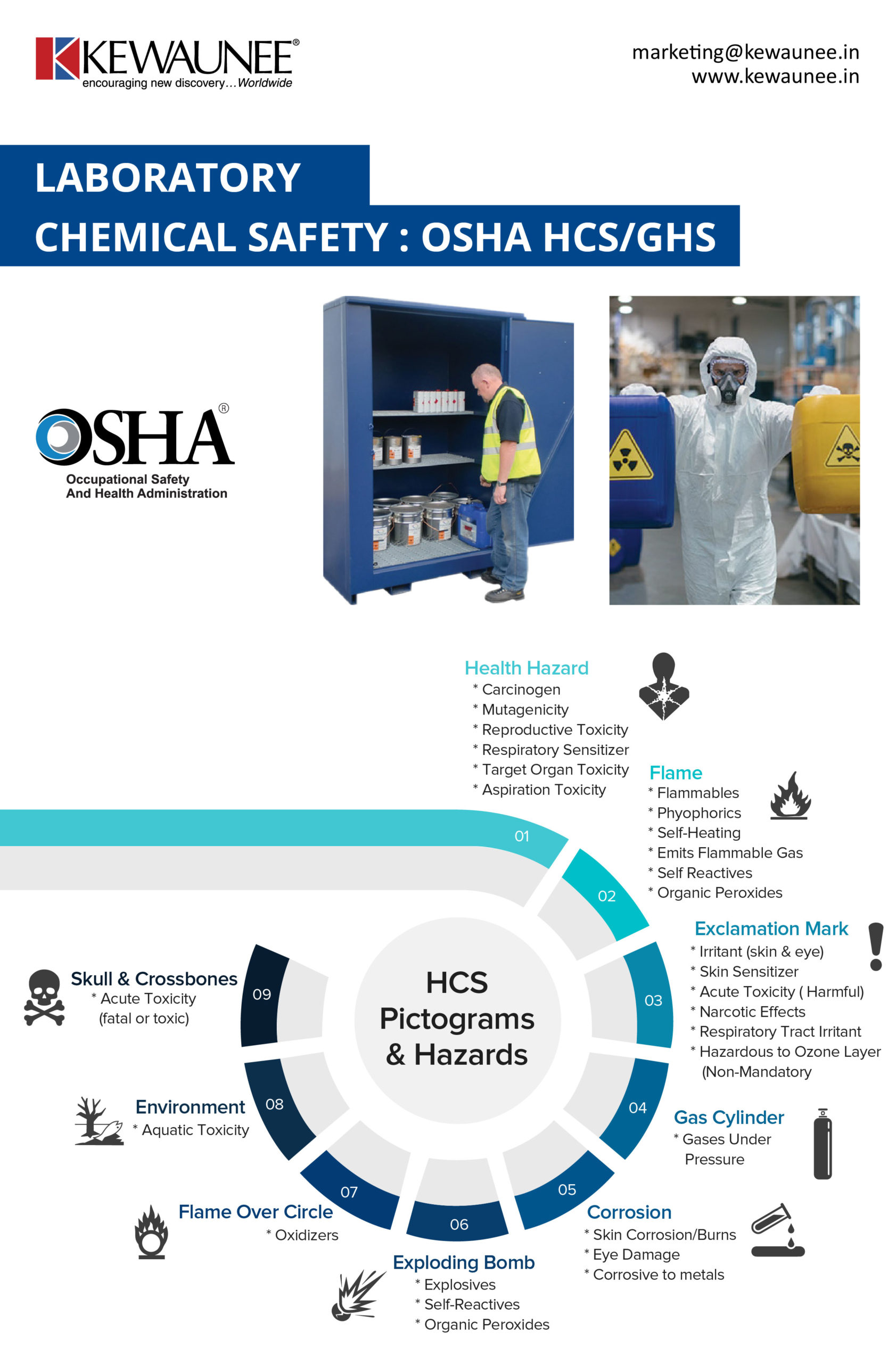Laboratory Chemical Safety: OSHA HCS/GHS
Laboratories around the globe are advancing the human society. Chemical laboratories play a significant role in acquiring new knowledge and developing new materials.
But life-threatening injuries can happen in the laboratory considering the toxicity of various chemicals stored and handled on a regular basis. Chemical toxicity is one of the most dangerous risks in a laboratory. Some chemicals have a harmful effect after a single exposure and some after repeated or prolonged exposure. The bottom line is no substance is entirely safe in a laboratory.
In 2003, the United Nations (UN) adopted the Globally Harmonized System of Classification and Labelling of Chemicals (GHS). The GHS includes criteria for the classification of health, physical and environmental hazards, as well as specifying what information should be included on labels of hazardous chemicals as well as safety data sheets.
In 2009, OSHA published a proposed rulemaking to align OSHA’s Hazard Communication standard (HCS) with the GHS. OSHA Hazard Communication Standard (HCS) was aligned with the Globally Harmonized System of Classification and Labelling of Chemicals (GHS). The update to the Hazard Communication Standard (HCS) provides a common and coherent approach to classifying chemicals and communicating hazard information on labels and safety data sheets.
The goal of GHS is to adopt a global set of rules for classifying hazards, Anyone working with chemicals must be aware of all the signs and symbols on the chemical containers.
Let’s look at the symbol and hazard information commonly encountered in research labs as part of the OSHA HCS. The pictogram consists of a distinct symbol framed within a red border representing a hazard.

Comments are closed.











